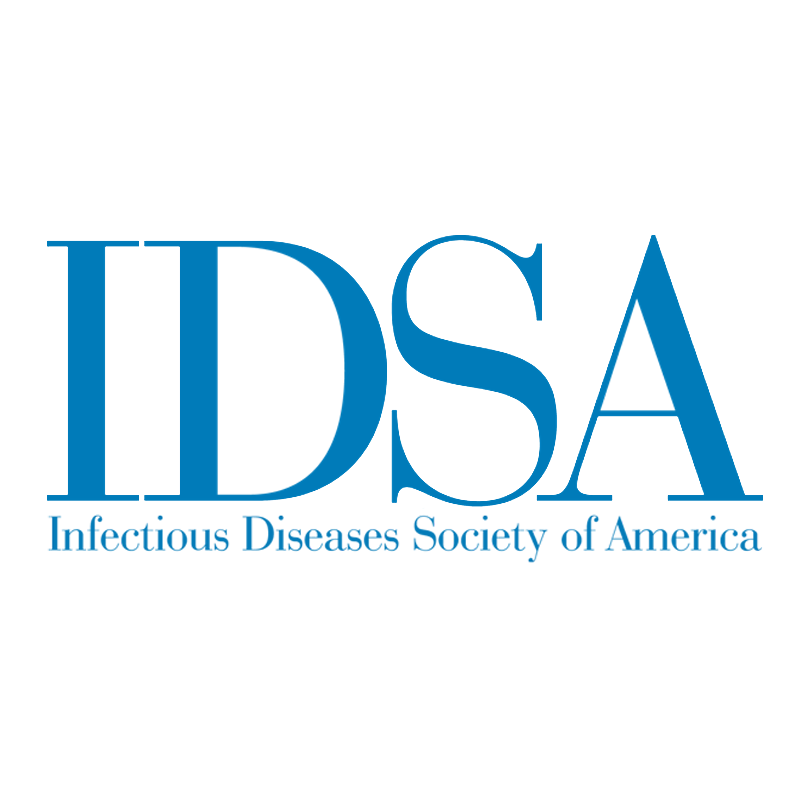IDSA’s Latest COVID-19 Treatment Guidelines
The Infectious Diseases Society of America (IDSA) discusses some of the new treatments show measurable impact on severe disease and death.

As the medical community’s knowledge of COVID-19 has grown, guidelines for treating it have evolved concurrently. The Infectious Diseases Society of America’s (IDSA) COVID-19 Treatment and Management Guidelines Expert Panel recently updated guidelines based on landmark studies incorporating ivermectin, tocilizumab, and other monoclonal antibodies. A press briefing featuring 2 co-chairs of the guidelines panel shed light on the new guidelines and what led to them.
Tocilizumab, a monoclonal antibody that blocks IL-6 receptors and appears to tamp down the inflammation seen in COVID-19, is now approved as a therapy for certain hospitalized patients. The panel looked at several randomized trials, including the large REMAP CAP trial and RECOVERY trials, which showed a decrease in mortality and improvement in other clinical outcomes.
“Even though there were some limitations to the evidence in exactly what population of patients with COVID-19 would benefit from tocilizumab, it did show some benefit in patients who were already receiving steroids and who were still sick,” Adarsh Bhimraj, MD, head of the Neurologic Infectious Diseases section and associate staff physician at the Department of Infectious Diseases at the Cleveland Clinic, said. “So this led the guideline panel to suggest that tocilizumab be used in hospitalized patients who are sick enough to have progressive, severe, critical COVID-19 when the blood studies show that inflammatory markers are still elevated even after receiving steroids.”
The panel also considered ivermectin, an antiparasitic that’s been generating a lot of buzz both nationally and internationally. Looking at multiple studies, including randomized controlled trials and nonrandomized studies that were designed adequately, they zeroed in on 4 randomized controlled studies of non-hospitalized patients that compared outcomes after taking ivermectin versus placebo or standard of care. “There was a serious risk of bias and imprecision in these studies, so the certainty of evidence was very low for outcomes that mattered to patients, like mortality or symptom resolutions,” Bhimraj said. “For that reason, I think this led the guideline panel to suggest against ivermectin use outside of the context of the clinical trial for both hospitalized patients and outpatients.” The panel is hoping for more information and more study data in its ongoing consideration of ivermectin.
One small study that focused on ivermectin did not find benefit in patients with mild COVID-19.
Other monoclonal antibodies are yielding good outcomes for COVID-19 patients. Late last year, the US Food and Drug Administration (FDA) issued an emergency use authorization for bamlanivimab monotherapy and the casirivimab/imdevimab duo. In 2021, the FDA issued an EUA for bamlanivimab and etesevimab in combination. The guidelines panel members looked at both banlumimib monotherapy and the casirivimab/imdevimab cocktail, but the information they had was from small phase 2 studies that included low-risk as well as high-risk patients.
However, more recent data has been released about bamlanivimab/etisevimab, which the panel has found useful. “Now it’s coming from a large phase 3 clinical trial that included more than 1000 participants, and all of those patients were at a high risk of developing severe COVID-19,” said Rajesh Gandhi, MD, professor of medicine at Harvard Medical School and director of HIV Clinical Services and Education at Massachusetts General Hospital.
The panel members saw there was a significantly reduced rate of hospitalization and death in patients who took bamlanivimab/etisevimab, leading them to suggest the drug cocktail for “outpatients who have mild to moderate disease who are at high risk for progression to severe disease,” Gandhi said.
It’s possible that bamlanivimab alone could benefit patients, but a 2020 study found no real benefit and Gandhi maintained that there is not yet enough information to issue a recommendation. “By the time patients are sick enough to be in the hospital, it may be that the window of opportunity [has] closed for bamlanivimab,” he said.
Indeed, a key to using bamlanivimab might be during the early onset of COVID-19.
Gandhi pointed out that variants may change the calculus for therapies. The B.117 variant, which was first reported out of the UK, is susceptible to the antibodies, he said. However, other variants from South Africa, California, and New York are—at least in laboratories—less susceptible to some of the antibodies. Because of this, the U.S. Department of Health and Human Services’ Office of the Assistant Secretary for Preparedness and Response (ASPR) is not distributing bamlanivimab in California, Arizona, and Nevada due to the proliferation of variants in those locations. The IDSA panel will continue to track local data around variants and may modify therapy recommendations if necessary.
While the SARS-CoV-2 pandemic hopefully will wind down in 2021, the therapies it yields could pay off down the line. “If we can develop antivirals or anti-inflammatories that work against this coronavirus, it... will put us in a better place for future pandemics,” Gandhi said. And while Bhimraj pointed out that none of the therapies currently used represents a game changer in the vein of penicillin, incrementally they have an impact on the disease burden.
Next, Bhimraj and Gandhi would like to see antiviral medications that can be administered orally in order to alleviate the hassle of intravenous administration. “Having a broad spectrum antiviral that targets RNA viruses that can be given as a pill—even to prevent transmission or to treat mild outpatient [cases]—will be extremely useful,” Bhimraj said. Current studies of oral therapies look promising, he said, but the team will need to see phase 3 trial results before making recommendations.
